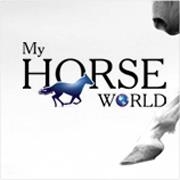Horsemanship Training Novice Rider

Every horse rider must master four foundational lessons, and all horses must understand these lessons. Two of these are taught in the Lyons Legacy School of Horsemanship Novice Rider course: Same Rein, Same Foot, and Reverse Arc. The other two foundational lessons are taught in the Intermediate Rider Course.
There are four main stages in becoming an effective Novice Rider:
• Bridle work from the ground
• Bridle and seat work from the saddle
• Moving the shoulder
• Reverse Arc
1. Before working your horse with the bridle from the ground – known as ground work – you must know how to put the saddle and bridle on correctly without causing the horse any discomfort or pain. Practice bridling and removing the bridle before moving on to ground work exercises. It’s recommended you use a round pen to do ground work.
The purpose of bridle work is to teach a horse to respond to bit pressure. It is the most important part of your horse training. For bridle work to be effective a trainer must (a) display confident body language, a positive attitude and a keen focus; (b) use bit pressure for your cues and not just your body; (c) pay special attention to the feel of your hands as the horse’s nose softens.
2. Bridle and seat work from the saddle requires that you can get on and off your horse safely; horses that walk off as you’re mounting are dangerous. Your body posture and rein hands, knowing how to ask your horse to walk, trot and lope, and being able to stop your horse are essential lessons for a novice rider to master.
3. Moving the shoulder is one of the four foundational lessons – it teaches your horse direct rein control. That is, when you pick up the left rein you want your horse to move his shoulder to the left, and vice versa to the right. The lesson used to teach the shoulder to move is called “Same Rein, Same Foot”, which describes the direct rein and direct leg pressure. Neck reining makes a horse move away from pressure. The rein used in neck reining is referred to as the “indirect rein”. A “direct rein” is when you bring a horse’s nose around using one rein.
4. Reverse Arc is another of the four foundational lessons. It directly builds upon the “Same Rein, Same Foot” lesson, by teaching you how to control not one, but both of your horse’s shoulders at the same time. It is a counter-bending exercise where the horse moves in a circle with his body bending in the opposite direction. It’s a great exercise to slow your horse, regardless of gait.
Company – LL Inc and the Lyons Legacy School of Horsemanship offer a wide variety of equine educational materials, including a series of horse training and riding courses, manuals, and videos for online and on-the-ground learning.
Contact – Ian Kirkham, LL Inc., ian.kirkham@gmail.com. A biologist with a PhD in animal behaviour, and a writer for much of his career, Ian now focuses on one of his lifelong passions – horses. He’s owned and trained horses in Canada, United States, Zimbabwe, and Costa Rica. Ian divides his time between training horses and creating educational products for horse lovers.
